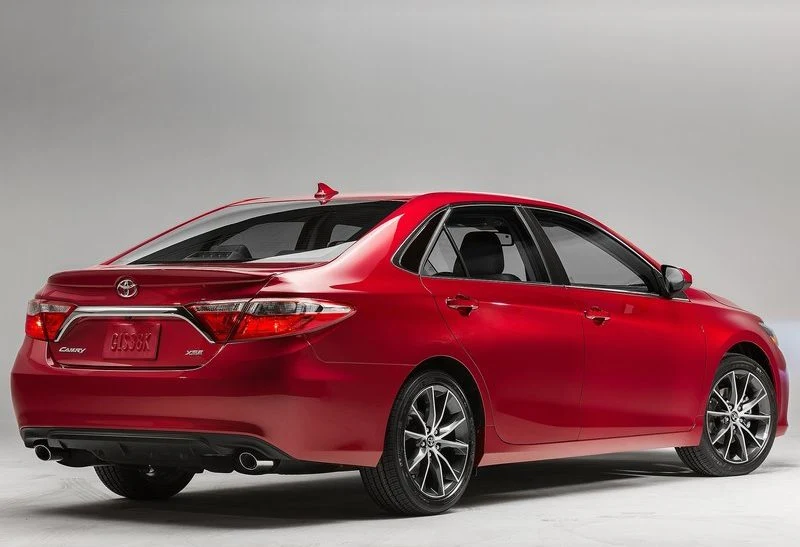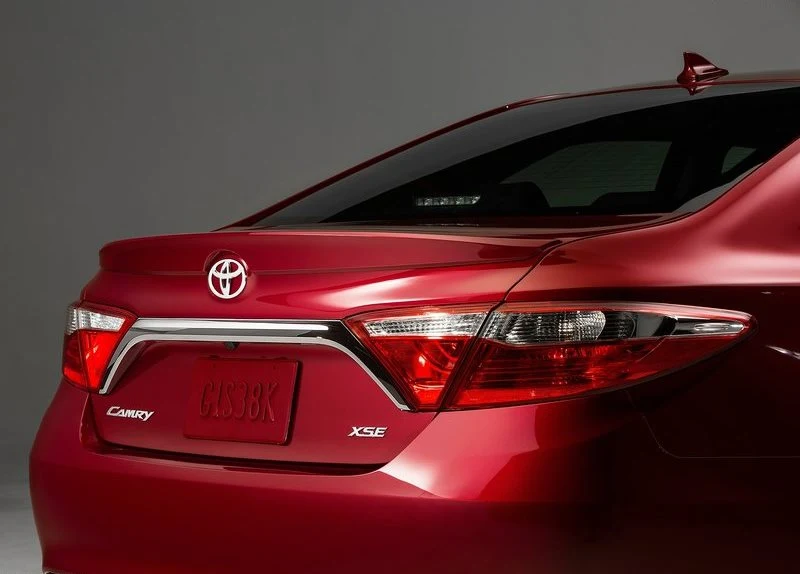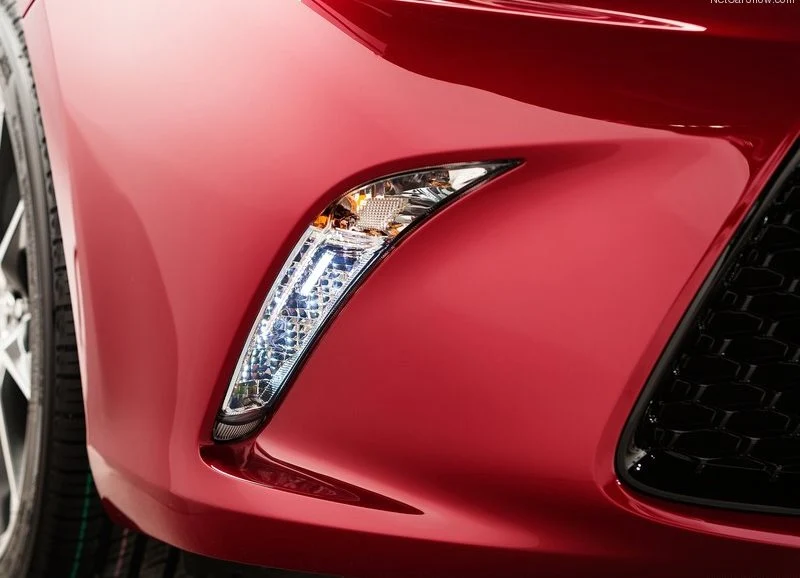$22,970
Usually, for any car that comes to Automan for review, we try to figure out where it stands
in the buyer’s community and the core reasons for its commercial success or failure. It terms of commercial success, Toyota’s D-segment mid-sized Camry’s remains unbeatable and hence one does
wonder about the mantra used by the Japanese brand in view of the automotive environment where power figures, acceleration times and features are major considerations.
We think the Camry’s success over the years is because it has always been a value-packed proposition with a decent feature pack, high reliability and low maintenance costs. It definitely ticks on all the right boxes and in the past has been the best selling model in several countries for Toyota. The current model for our region is imported from Australia and as we all know, Toyota will be disbanding its production facilities in that country in a phased manner by 2017.
However, this is not the end for the model series as Camry production will continue in other Toyota
production plants including North America and Asia. In a way, the final Australian-built version gets a befitting send-off. A mild mid-life facelift would have been enough, but since it is a significant model, Toyota has treated the Camry to a major refresh.
And there’s one other reason for this. Toyota CEO Akio Toyoda has ordered his engineers to make more exciting cars for the brand and in particular the Camry, which has earned the reputation as one
of the most sedate cars on the road. So for anyone familiar with the Camry, it is an interesting juncture to see how the 2015 model has evolved further.
One fact which needs to be appreciated about Toyota that it didn’t claim that the incoming car was all-new model and the reason for this is understandable. The chassis is basically unchanged apart from a slightly wider track, marginal increase in length, most of the hardware include powertrain has been carried forward.
The refresh exercise began with the exterior where Toyota designers and engineers re-imagined nearly every exterior surface of the car. Only the roof panel is carried over. The car grabs subtle styling cues from the current Avalon and Corolla, with a hint of Lexus visible as well. The most dramatic change is the grille. And then you have a pronounced body line starts from the Camry’s front mudguard and runs across the doors and rear quarter panel which together give the car a sharper profile.
Dimensionally, the car is slightly longer now [by 45mm] and features a 10cm widened track. This
helps communicate its dynamic stance and presence. The sleek profile also gets complementary
detailing. New angular and sleek headlamp clusters contrast the aggressive front face, while the front turn signal indicators and LED DRL’s are now integrated in a single unit.
The car’s rear tail lamps sweep into the tapered sheet metal at the rear of the car and a decorative garnish connects the tail lamps across the boot lid. The design story also infiltrates the car’s cabin. Once inside, the first thing noticed is the conscious attempt to get rid of the older car’s bland appeal. The dashboard and door panels continue to use an older design theme, but the bigger news is the marked improvement in the materials usage, the new multimedia system and in general improved amenities.
The redesigned central console features a high-tech, upscale look that smoothly integrates with the rest of the cabin. The console now offers increased storage capacity while offering a convenient power source in the storage box. The new enclosed bin in front of the shifter now offers 12V power and USB socket. The revisited cockpit that offers intuitive topflight in-car electronics and displays that help reduce driver stress and distraction.
The instrument panel features a new 4.2in TFT screen nestled between the threedimensional Optitron gauges. The screen’s colour animation displays a wide range of vehicle functions and coordinates with the multimedia system to display audio, navigation, warnings and communications.
Detailed high contrast French-stitching and trim elements finished in satin chrome convey a sophisticated appearance. The car retains a very user-friendly passenger cabin with very comfortable seating for passengers. While a great deal of attention has been paid in enhancing cosmetics and touch points, Toyota engineers have also worked on the car in view of its business objective of trying to attract a more youthful audience.
Part of this strategy involves adding more technology to its entertainment systems in addition
to other applications. In terms of new technology applications, Toyota engineers have renewed their focus on reducing unwanted wind and road noise to offer an even quieter cabin. As a result of
this drive, window and door seals have been improved to keep noise outside and more sound insulating material has been used.
Even the exterior side mirrors were redesigned to better control air flow reducing turbulence and noise. While constructing the car on a carryover platform, engineers have stiffened the core structure by increasing the number of spot weld points to the door opening flanges to increase torsional rigidity.
The electric power steering has been tuned for better on-centre feel, better straight line stability and more direct feeling steering inputs. In addition to improvements in steering feel, the hydraulic system has been revised with a two-stage brake booster to improve brake feel. A combination of Macpherson struts up front, a multi-link arrangement at the rear and a stiffer body structure allows for unique suspension tuning across trim levels.
The car uses a carried forward normally aspirated 2.5-litre four-cylinder engines paired with 6-speed automatic transmission. This set-up offers 178hp and 170lb-f of torque. All Toyota vehicles come standard with the STAR Safety System. In addition, Camry will offer safety-focused driver aids including Lane Departure Alert, Adaptive Cruise Control, Pre-Collision System with Auto High Beams, and Blind Spot Monitor with Rear Cross Traffic Alert depending on trim level chosen.
Driving impressions We have driven several iterations of the older Camry’s and its dynamic strength over the years has always been creamy ride quality, smooth powertrains, and relatively quiet operation. While the styling definitely gives the 2015 Camry a much stronger visual presence, the adjustments in the driver gratification department was an area of our interest.
And we were not disappointed. Under the bonnet is a tried and tested naturally-aspirated four cylinder engine. Acceleration from the four cylinder is good for the segment and the transmission is very well paired for the job. It shifts smoothly and holds gears as long as it is necessary. The cabin is almost Lexus quiet at all speeds and the suspension erases small road irregularities competently.
As before, the Camry is an uncomplicated to drive and to expect outright sports car performance isn’t really justified in this set-up. However, in some markets, the Camry is offered with a bigger V6 and
factory tuned sports suspension. We wish at some point of time this variant becomes available in this market as it could give the Camry a new platform to talk about. The car’s road manners are predictable and this transparent aspect of driving is exactly what many motorists are looking
for in a mainstream car.
However, we do observe some of the benefits associated with the upgrades. For instance, the chassis feels tighter and sharper and this is evident from the way it is now able to resist body-roll and the way it sends more feedback through the steering wheel to the driver.














Post a Comment